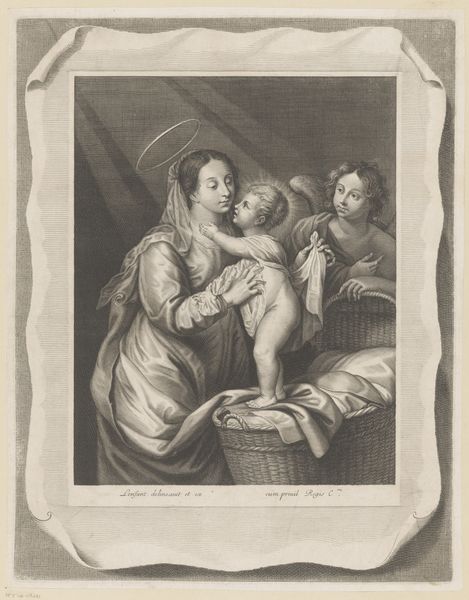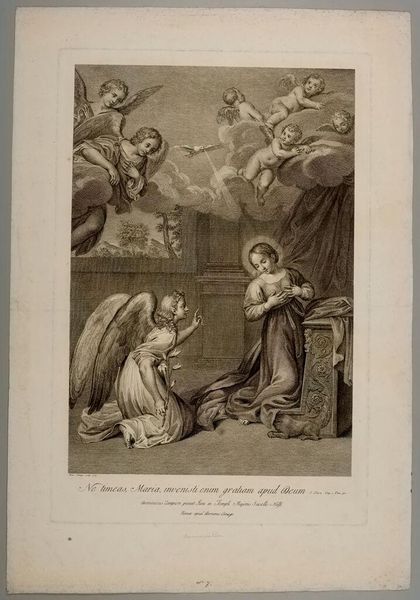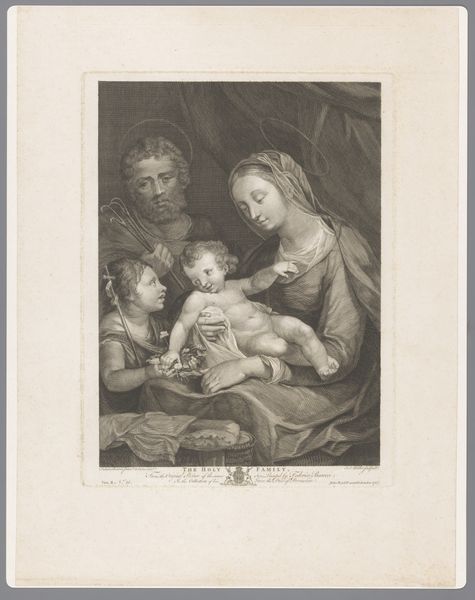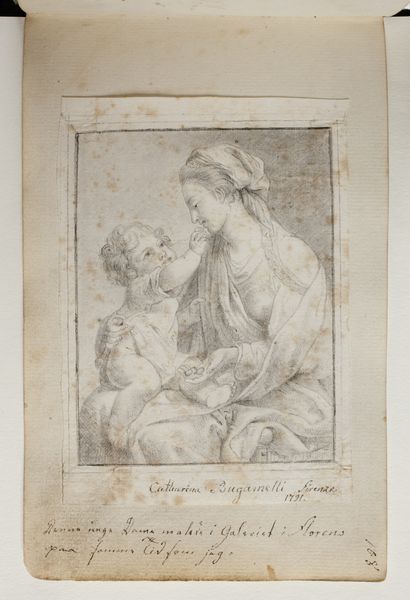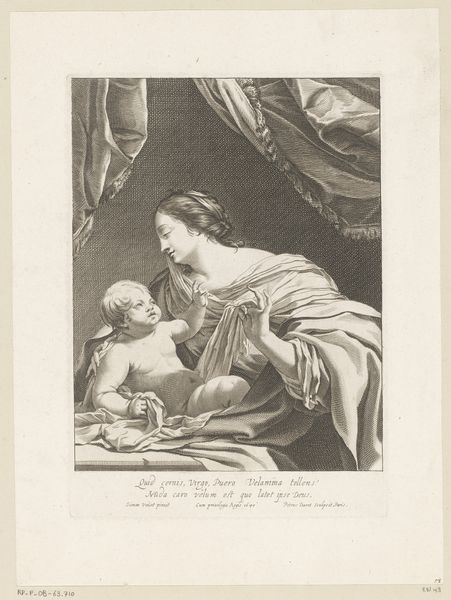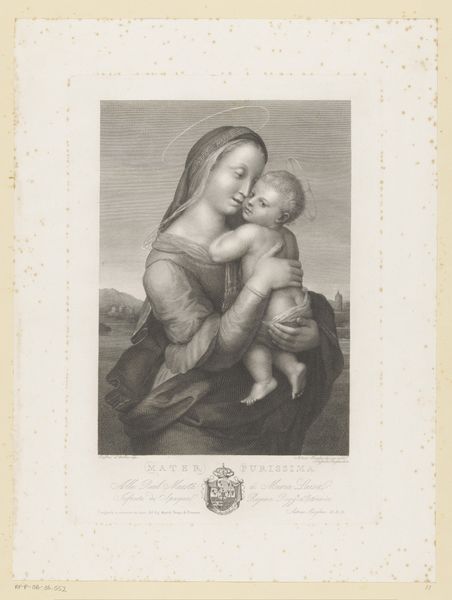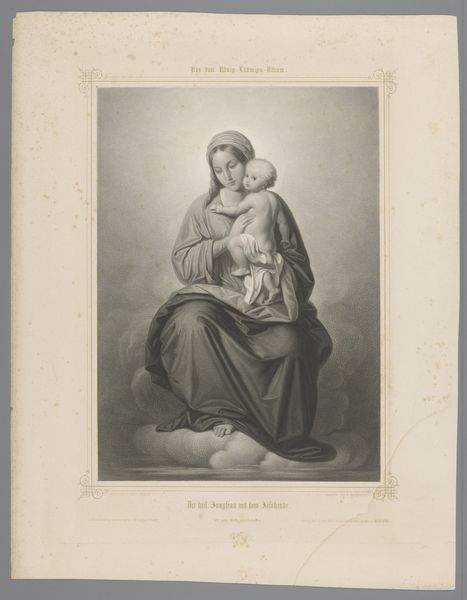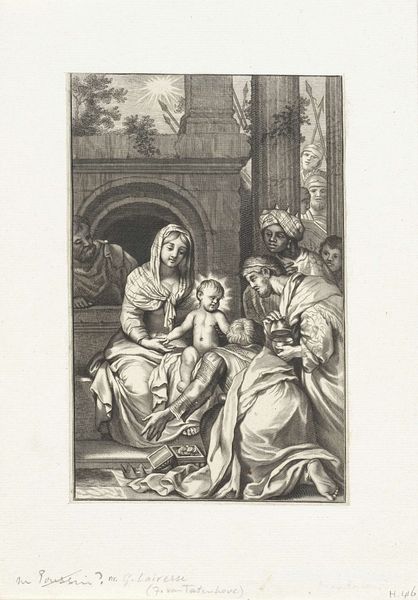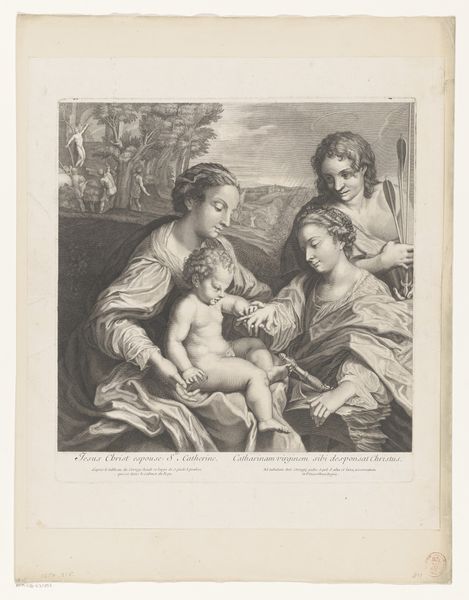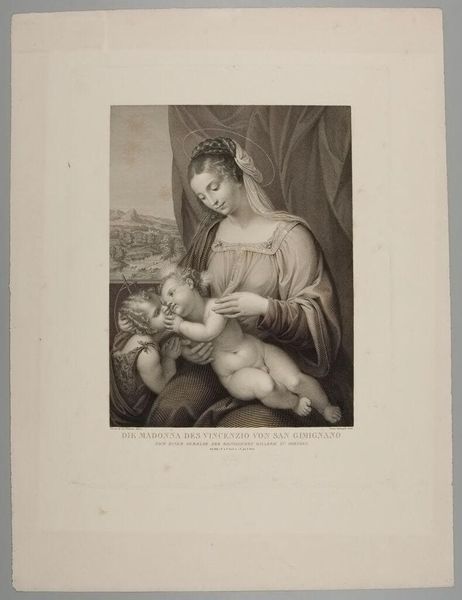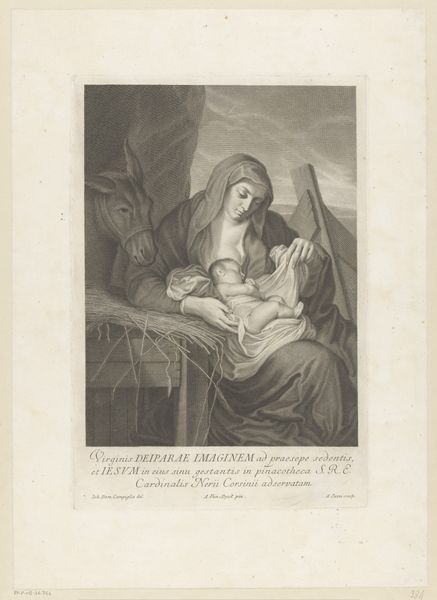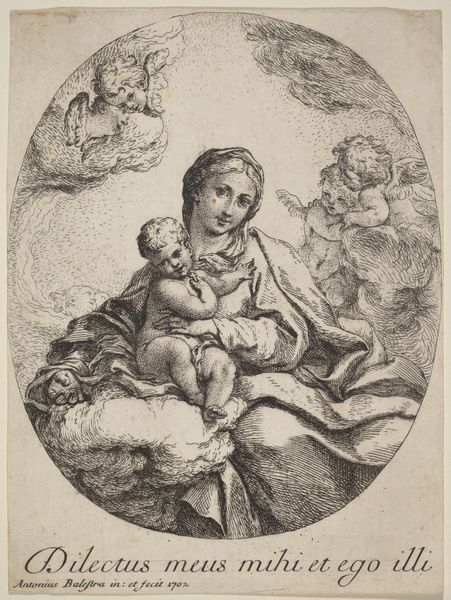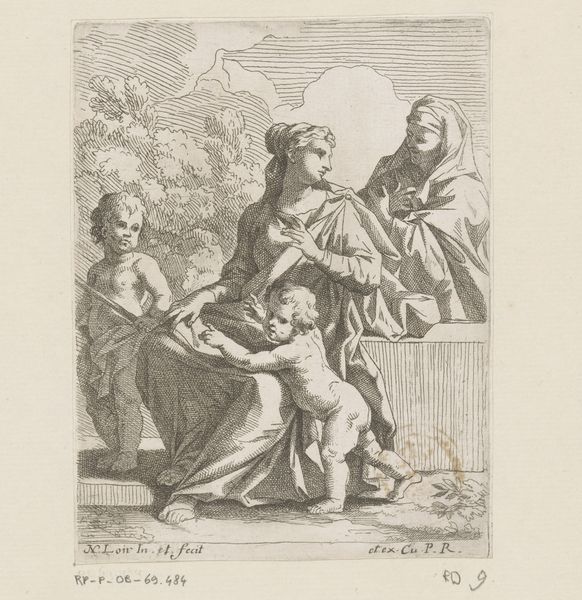
lithograph, print, engraving
#
lithograph
# print
#
history-painting
#
academic-art
#
engraving
Dimensions: 215 × 180 mm (image); 460 × 315 mm (sheet)
Copyright: Public Domain
Curator: Here we have Franz Johann Heinrich Nadorp's "Madonna with the Christ Child," created in 1826. It’s currently part of the Art Institute of Chicago's collection. The artwork presents the Virgin Mary holding the Christ Child, flanked by angels, within an arched composition. Editor: The texture strikes me first. You can almost feel the smoothness of the lithograph in contrast to the intricate lines that make up the figures. It seems both delicate and intensely crafted, drawing me in closer. Curator: Yes, the piece is indeed a lithograph and engraving. Nadorp has masterfully used this medium to evoke a classical style, harking back to earlier Renaissance depictions of the Madonna and Child. Notice how the halos, the arch, and the serene expressions all contribute to this sacred atmosphere. Editor: Absolutely. Thinking about it as a lithograph made in the 19th century, what would it mean for an artist like Nadorp to embrace a production method which allows for relative mass production while reifying what it meant to see a unique oil on canvas in a religious setting? Is this the same as praying through a devotional painting if it's one of hundreds of prints, signed by Nadorp? Curator: An excellent question! The visual language itself conveys cultural memory— the Madonna is an icon understood across centuries and cultures, symbolizing maternal love, divine grace, and the promise of salvation. Nadorp utilizes recognizable imagery to tap into pre-existing beliefs. The print becomes a portable conduit of these beliefs, even for more secular homes. Editor: Portable it is, and that changes who it would reach and its reception by a newly expanded audience of devout practitioners. It gives the sense that the artist wasn't necessarily after a personal breakthrough. It really leans into a type, a recognizable religious symbol. What kind of workshops was Nadorp working in that mass-produced spiritual iconography in 1826, and who were its intended customers? Curator: Exactly. That kind of commercialization invites speculation around authenticity. Nevertheless, I appreciate the accessibility this print form provides; allowing devotional images to reach a broader public than perhaps only those who could afford unique painted versions. Editor: That's a thought-provoking idea to end on. It's fascinating to see how an artwork, through its materiality, can shift the ways we relate to enduring symbols and traditions.
Comments
No comments
Be the first to comment and join the conversation on the ultimate creative platform.
